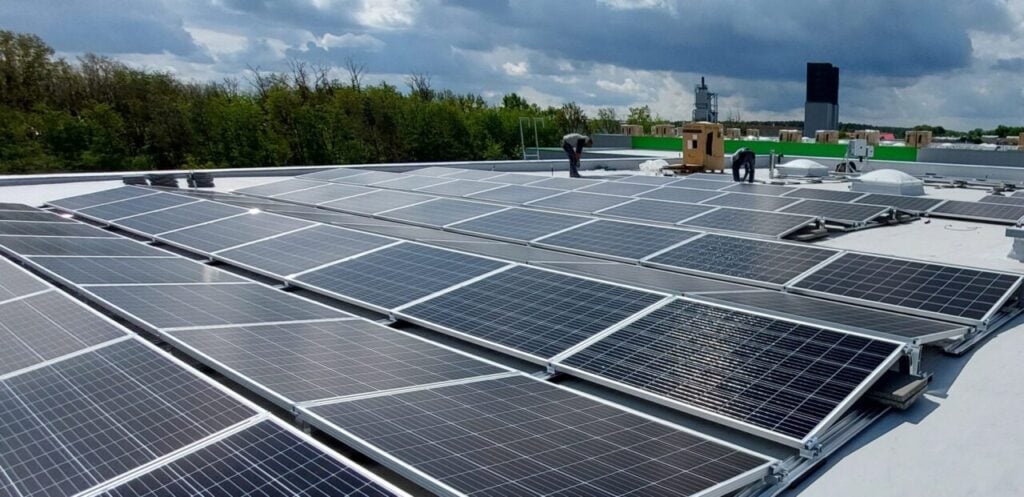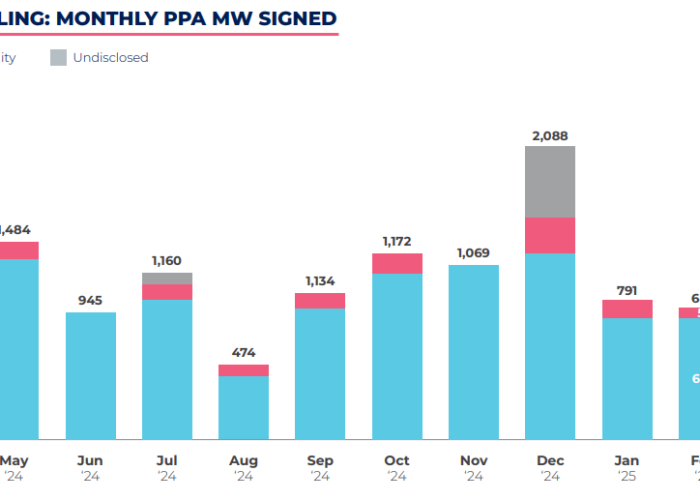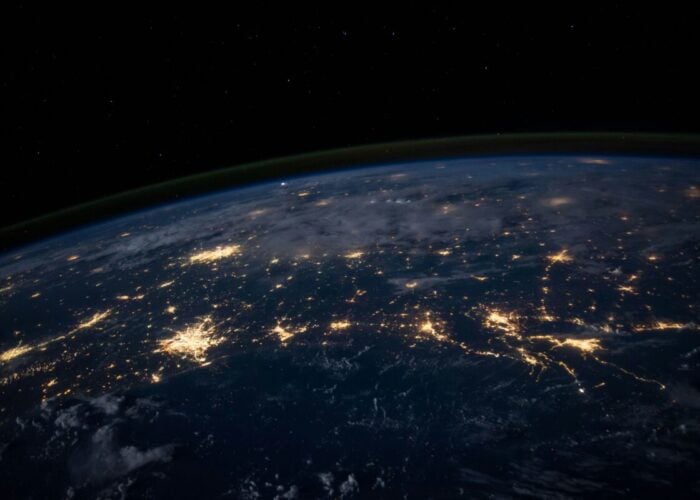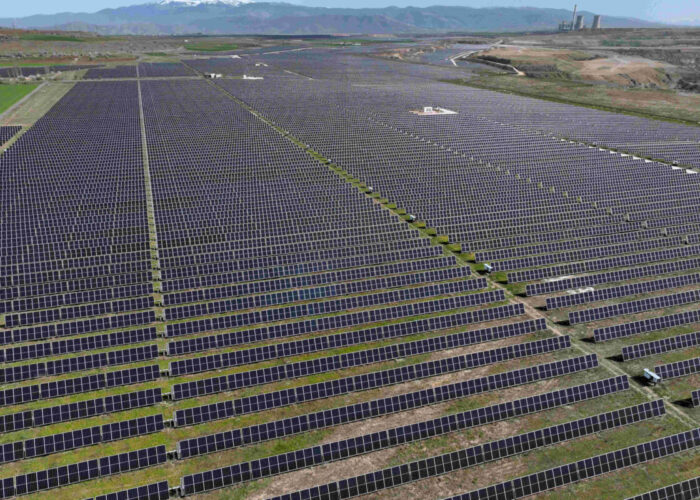
Poland has one of the most rapidly-changing energy mixes in Eastern Europe. Data from Ember Climate shows that coal’s contribution to the country’s total electricity generation reached 61.1% at the end of 2023, down from 84.1% just a decade earlier. While wind has historically led the way in replacing this electricity generation, responsible for 13.7% of the Polish energy mix in 2023, the contributions of solar power have more than tripled in recent years, from 2.2% in 2021 to 7.3% in 2023.
“Solar made a revolution,” begins Roman Karbowy, chairman of the AgriPV Working Group within the Polish Photovoltaics Association, who spoke exclusively with PV Tech Premium last week. While the growth of renewable power generation capacity is a phenomenon seen all over Europe and the world, the Polish solar revolution is notable as, according to Karbowy, this was a change driven by small-scale installations.
Unlock unlimited access for 12 whole months of distinctive global analysis
Photovoltaics International is now included.
- Regular insight and analysis of the industry’s biggest developments
- In-depth interviews with the industry’s leading figures
- Unlimited digital access to the PV Tech Power journal catalogue
- Unlimited digital access to the Photovoltaics International journal catalogue
- Access to more than 1,000 technical papers
- Discounts on Solar Media’s portfolio of events, in-person and virtual
Or continue reading this article for free
“This revolution came not from the large-scale PV, but started from the really small scale, up to 1MW installations,” he says, referring to rooftop residential solar in particular as a cornerstone of this transition. “They were growing all over Poland, and right now, renewables can provide more than 30% of the Polish energy mix, which is a huge gain in a few years.”
Indeed, the Polish government is aiming to use renewable power to account for 32% of its electricity generation by the end of the decade, up from 27% in 2023, and 21% in 2022. As Poland looks to meet this goal, the successful growth of small-scale solar thus far could help set a precedent for other aspects of the Polish solar industry, from utility-scale projects of record-breaking capacity to the country’s nascent agrivoltaics (agriPV) sector.
Poland’s solar revolution
“This rapid expansion is partly due to supportive policies and programmes such as ‘Mój Prąd’ (‘My Power’), which encouraged the adoption of solar energy through subsidies and incentives,” notes Karbowy, who describes the scheme as a “huge boon”, as it has helped protect customers from the potential disruption that can come from variable power prices.
“Household PV is one sector that is being shielded by the market by the regulatory office that we have in Poland; and we have the market – the companies and other players – who are exposed to the market fully. Normal people and houses have tariffs that need to be approved, and usually they are [done] in such a way to protect people from too harsh conditions about prices of electricity going up,”
“Some of the prices are even frozen, now, which is quite funny because the tariffs where you have frozen your prices is, right now, more expensive than what you can find on the market,” he laughs, highlighting that the government’s priority has been, above all else, ensuring energy resilience and a security of supply.
The security of renewables is further supported by the nature of Poland’s energy system as a whole, which Karbowy describes as “becoming more investor-friendly”, due to a combination of initiatives such as My Power and the growth of the market. Data from the Energy Market Agency shows that, as of September 2023, Poland had more than 1.3 million ‘micro-PV’ installations, those of capacity under 50kW, collectively representing 10GW of grid-connected capacity.
The Polish solar sector has also been buoyed by declining interest in the country’s historic coal industry. Karbowy notes that the transition from coal-fired electricity to renewable power is not exclusively motivated by environmental concerns, but the simple technological fact that new research into coal-fired power plants, to maximise their generation potential, is not being conducted in the same manner as it is in the solar sector.
“It’s also the technical things that affect it a lot,” he says. “Of course, if you [consider] building a coal- or gas-fired power plant, nothing can beat PV or wind. It’s much clearer how to do PV or wind in Poland, in three or four years, [which is] impossible to match with a coal-fired power plant.”
Grid growing pains
However, the rampant acceleration of solar deployment has created challenges for the country’s grid infrastructure; namely that there is more solar capacity being installed, particularly in the residential sector, than the grid can effectively manage, and Karbowy calls the current grid operation system in Poland “a pain”.
“We don’t have a system that has huge storage capacity in Poland, so [storage] was only a virtual thing, and it created problems with the grid,” he says. “People were installing a lot more [solar power] than they were using in their households, and that was creating a huge push of electricity to the locations that never produce electricity, [and are] only receiving from the grids.”
The plight of residential solar mirrors that of the broader Polish renewable power sector; according to figures from Ember, in 2021 alone there was nearly 15GW of renewable power capacity awaiting grid connections, and the following year, the country’s distribution system operator refused grid connections for more than 7,000 projects.
However, Barkowy notes that the national government has been proactive in looking to upgrade its grid infrastructure. Notably, the government replaced the old system of storing locally-produced electricity with virtual batteries with a feed-in tariff system, which has led to greater costs for residential customers, but one that has helped solidify the grid.
“It changed the programme from the situation where you were paying absolutely nothing – only the fees for the connection and nothing for the electricity – to a situation where you are paying less [than without feed-in tariffs] for the electricity.”
Karbowy also noted that the government has sought to work with the EU to help overcome these grid challenges, which may be necessary as Poland’s own ministry of climate and environment forecasts that the grid alone will need €110 billion (US$118.7 billion) of investment until 2040 to meet the country’s climate change targets. Between 2018 and 2023, Poland benefitted from grid resilience projects from the European Bank for Reconstruction and Development (EBRD), which translated to €53 million (US$57.2 million) in grid investments over the five-year period, and this trend will need to continue.
“The government saw the problems with the grid capacity on the national level [and] on the distribution level, and what Poland gained by being in the EU was this EU recovery fund that is mostly targeted to improve the electric grids, to make them, on the distribution and transmission levels, more resilient [and] more prepared for the [renewable power] change that is coming,” Karbowy says. “It’s nothing like a programme, it’s signals from the national transmission operator that we need more storage.”
Falling through the cracks
The emphasis on small-scale solar support and large-scale grid investments means that Poland’s energy grid is one that is looking to solidify projects at the opposite ends of the capacity spectrum. Karbowy notes that projects as large as 50MW or 100MW have become more common than projects around 30MW in size in recent years, and the country’s largest project, the 286MW Zwartoto plant, was supported by a loan from the EBRD.
However, this emphasis on large- and small-scale projects means that ones of less extreme capacity can be forgotten; Karbowy points to agriPV as a sector that has particularly struggled in this regard.
“It’s kind of in-between,” he says of agriPV in Poland. “It’s not small enough for the farmer to do alone … and it’s not yet as big as the big investors would like the projects to be. What we were doing as an agriPV association in Poland is trying to push to make pilots for agriPV projects, and those pilots should be done with collaborations with universities; so you get the pilot, you get the installation, but you also get the data on how it really works.”
Looking ahead, Karbowy highlights the significant potential in the Polish agriPV sector, pointing to Ember figures that suggest that agriPV alone could account for 39GW of installed capacity over shade-benefitting crops, such as berries. He also suggests that Poland’s future energy mix is likely to be both more reliant on renewable power, and more diverse – both in terms of the technologies used for renewable power generation and the scales of these projects – than in previous years.
“AgriPV has the potential to make a significant contribution to Poland’s clean energy goals, especially given the dual benefits of energy production and agricultural support,” he says. “However, large-scale solar projects are likely to play a more dominant role in the near future. Other renewable technologies, such as wind and biomass, also make a significant contribution to Poland’s energy mix.”
Such a system would be a far cry from Poland’s energy mix at the turn of the century, where coal-fired power accounted for 94.9% of the country’s total electricity production.
While there is interest in furthering the role of agriPV in Poland, Karbowy notes that the government may have to take a more active role in developing the sector, as it did with residential solar in years past; perhaps the recent changes made to the country’s residential solar sector could serve as something of a blueprint for agriPV, the next step in Poland’s solar revolution.
“This is one of the things that’s pushing them into thinking about agriPV, but because agriPV is non-existent in Polish law, there is no way to think about some kind of incentive for the farmers. Maybe that will push them to do it, but because it’s not yet defined in Polish law, this is the biggest setback,” says Karbowy.
“If we break this barrier, all the solutions that we have created with PV can be copied-and-pasted.”
PV Tech publisher Solar Media will be organising the fourth edition of Large Scale Solar Central and Eastern Europe in Warsaw, Poland 26-27 November 2024. The event will focus on Eastern Europe with a packed programme of panels from industry leaders, including Roman Kabowy, responsible for the build out of solar and storage projects in Poland, Bulgaria, Romania, Hungary and the Baltics. For more information visit the event website.







